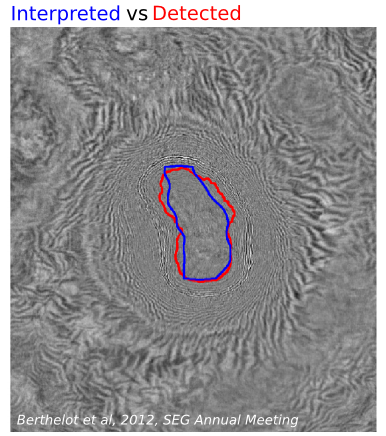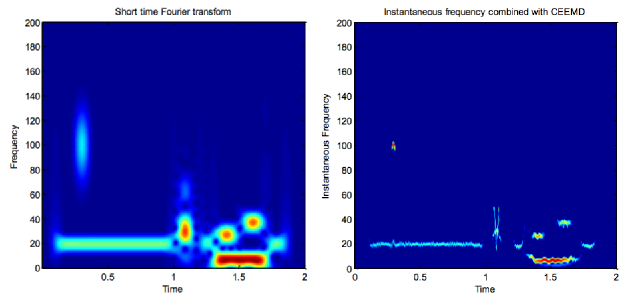Segmentation and decomposition
/Day 4 of the SEG Annual Meeting in Las Vegas was a game of two halves: talks in the morning and workshops in the afternoon. I caught two signal processing talks, two image processing talks, and two automatic interpretation talks, then spent the afternoon in a new kind of workshop for students. My highlights:
Anne Solberg, DSB, University of Oslo
 Evan and I have been thinking about image segmentation recently, so I'm drawn to those talks (remember Halpert on Day 2?). Angélique Berthelot et al. have been doing interesting work on salt body detection. Solberg (Berthelot's supervisor) showed some remarkable results. Their algorithm:
Evan and I have been thinking about image segmentation recently, so I'm drawn to those talks (remember Halpert on Day 2?). Angélique Berthelot et al. have been doing interesting work on salt body detection. Solberg (Berthelot's supervisor) showed some remarkable results. Their algorithm:
- Compute texture attributes, including Haralick and wavenumber textures (Solberg 2011)
- Supervised Bayesian classification (we've been using fuzzy c-means)
- 3D regularization and segmentation (okay, I got a bit lost at this point)
The results are excellent, echoing human interpretation well (right) — but having the advantage of being objective and repeatable. I was especially interested in the wavenumber textures, and think they'll help us in our geothermal work.
Jiajun Han, BLISS, University of Alberta
The first talk of the day was that classic oil industry: a patented technique with an obscure relationship to theory. But Jiajun Han and Mirko van der Baan of the University of Alberta gave us the real deal — a special implementation of empirical mode decomposition, which is a way to analyse time scales (frequencies, essentially), without leaving the time domain. The result is a set of intrinsic mode functions (IMFs), a bit like Fourier components, from which Han extracts instantaneous frequency. It's a clever idea, and the results are impressive. Time–frequency displays usually show smearing in either the time or frequency domain, but Han's method pinpoints the signals precisely:
That's it from me for SEG — I fly home tomorrow. It's tempting to stay for the IQ Earth workshop tomorrow, but I miss my family, and I'm not sure I can crank out another post. If you were in Vegas and saw something amazing (at SEG I mean), please let us know in the comments below. If you weren't, I hope you've enjoyed these posts. Maybe we'll see you in Houston next year!
The images adapted from Berthelot and Han are from the 2012 Annual Meeting proceedings. They are copyright of SEG, and used here in accordance with their permissions guidelines.
I just stumbled on another blog post about SEG! Laurent Duval has lots to read on his geophysicsy blog. Add it to your reader.
I was especially pleased to see him writing about Chuck Mosher's talk on the generalized windowed transform, because I was ill-equipped to write about it*, though it seemed 'important'.
* I know what you're thinking — that doesn't usually stop me.










 Except where noted, this content is licensed
Except where noted, this content is licensed